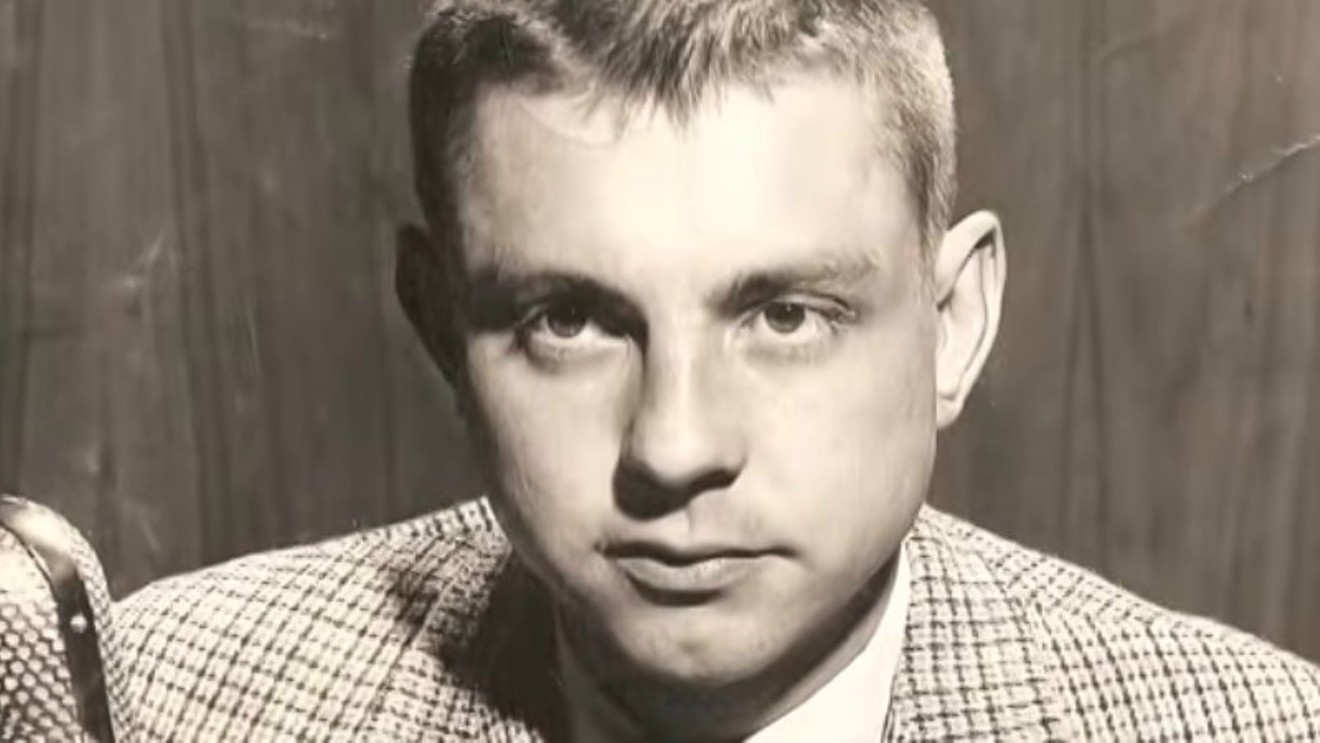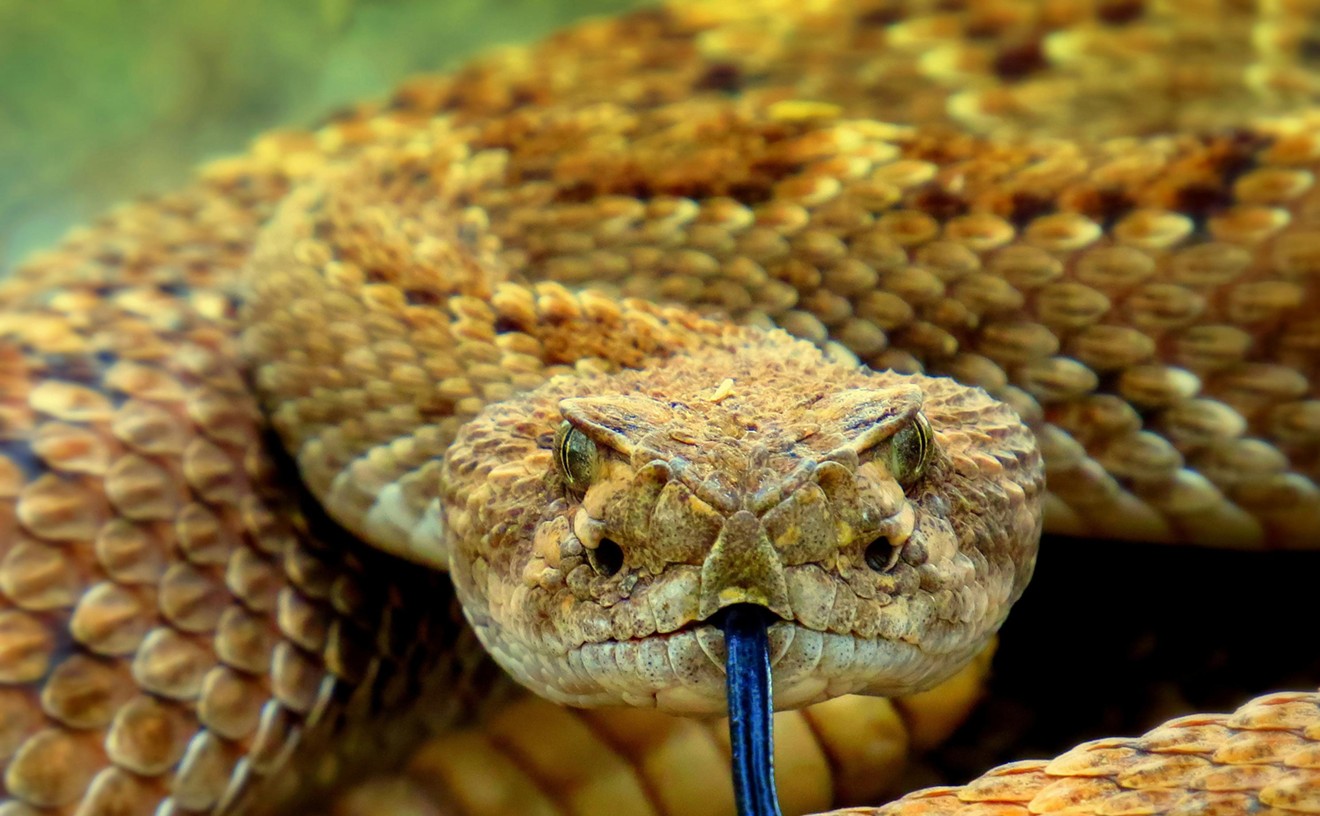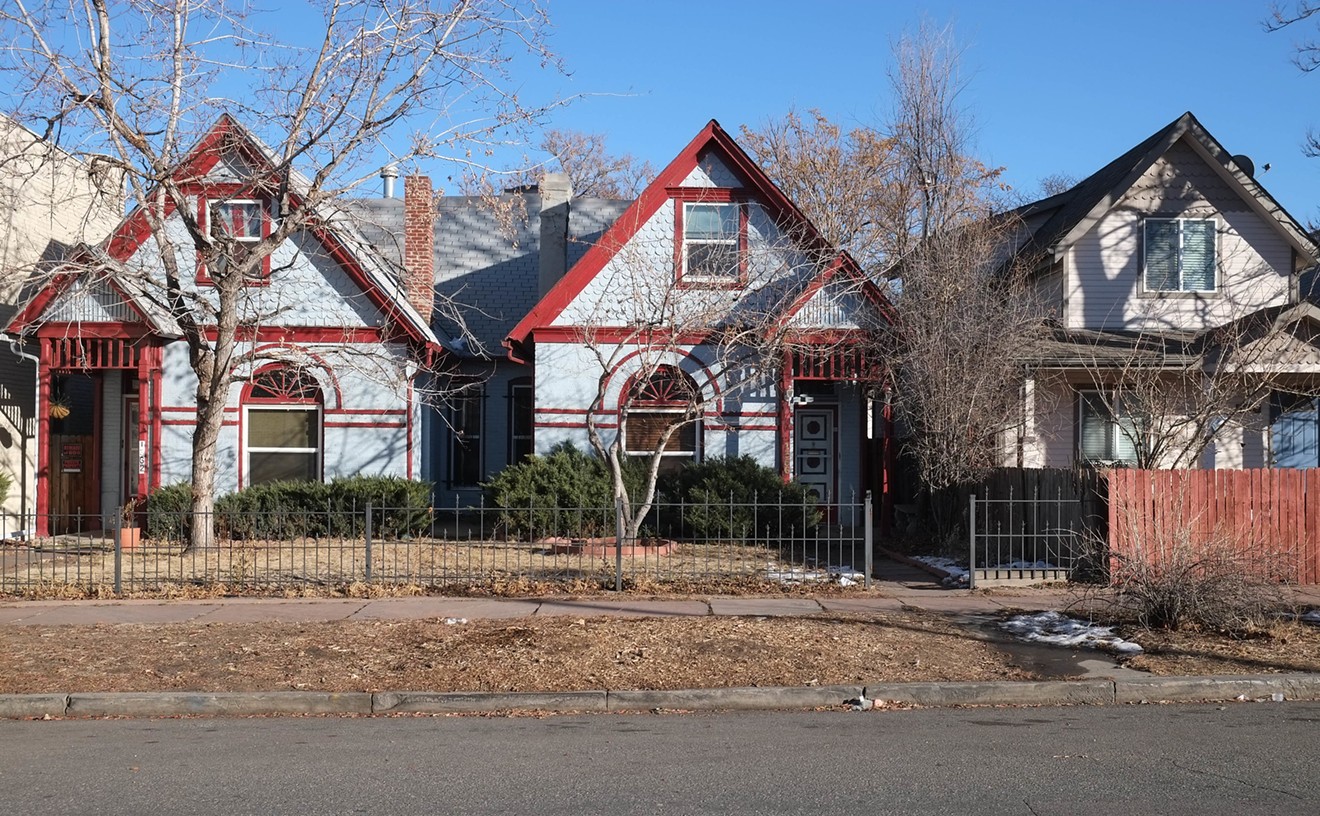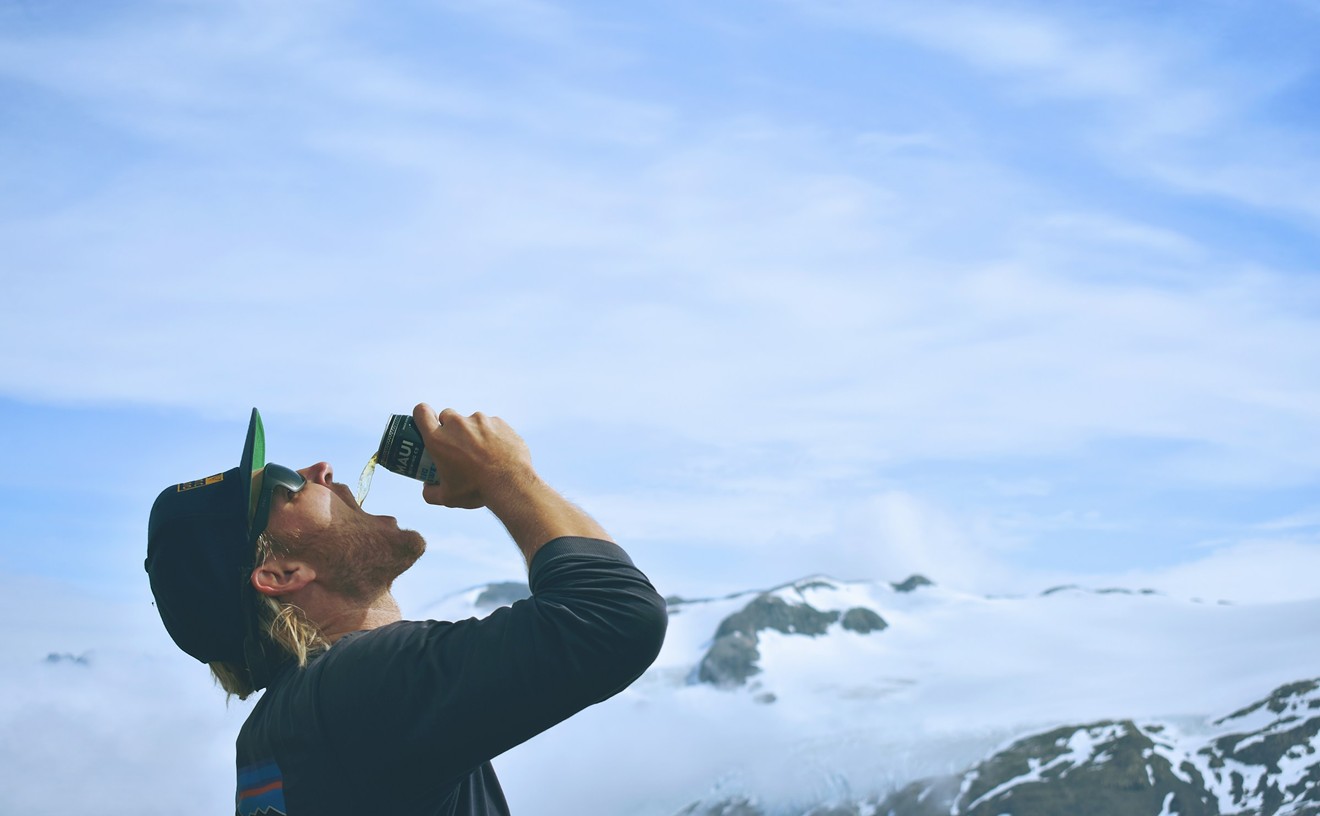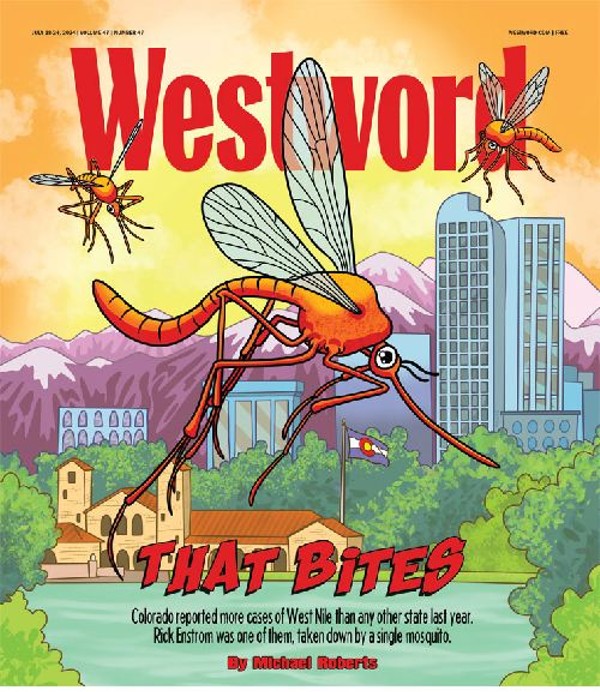Don Martin, who was in his late eighties when he died this week after a brief illness, was a giant of Denver broadcasting, thanks to his role as a pioneer (no, the pioneer) of live news coverage in the Mile High City, as well as the market's first traffic eye in the sky — the role he was playing when, remarkably, he experienced a mid-air collision and lived to tell the tale. Young local TV journalists may not realize it, but they're all standing on the shoulders of a man who spent his career in radio, at signals such as the late, lamented KIMN, at 950 AM.
"Anybody who grew up here in Denver in the ’60s, as I did, knew him," says former broadcaster Dan Hopkins, a family friend of Martin's as well as the onetime spokesperson for Colorado Governor Bill Owens. "They knew KIMN. They knew him as an airborne traffic reporter, and they knew him as the newsman they turned to when there was breaking news. Back then, there was no TV spot news. There were no satellite uplinks. If it was going to be live, it was going to be on radio, and most of it was done on KIMN by Don Martin."
Circa 1996, in a conversation with Westword's Robin Chotzinoff for the feature article "Vroom With a View," Martin talked about the unlikely path that led him to a microphone. He remembered walking with a friend along the Platte River in 1949 and thinking, "Boy, Denver's gonna be a big city — and we decided we were going to be policemen and patrol the new freeways."
After serving in the Air Force, where he learned to pilot planes, Martin did just that, joining the Denver Police Department in the auto-theft unit. But after his pal, who'd become a patrolman, died in the line of duty — and because the low pay meant "you starve to death as a police officer" — he turned to radio and subsequently became news director at KIMN. The outlet specialized in rock music, and its listenership was astonishing, as Hal Moore, Denver's most popular DJ ever, recently explained to us upon his retirement after 61 years on the air. One of Moore's nighttime shows at the outlet earned a 43 ratings share, meaning that of every 100 radios on in Denver at the time, nearly half of them were tuned to KIMN.
Here's an excellent video about Martin's career:
When Martin first began doing traffic reports by air in the late 1950s (something that was exceedingly rare even in major cities at the time), there were few jams of the sort Denver drivers regularly experience now, leaving him time to editorialize about issues of the day and deliver weather reports from an unusual vantage point. "I'd look out on the horizon for a thunderstorm, and when I saw it, I'd say something like, 'If you live in Arvada, you'd better get your clothes off the clothesline — this storm'll hit you in fifteen minutes,'" he told Chotzinoff.
By 1963, with more cars on the road, he took a different tack, entering into a casual agreement with Dick Lundquist, the first highway police officer in the Mile High. "He would listen to me on KIMN," Martin noted, "and if I saw an accident, I'd say a code word. When he heard the code, he'd call the police radio room and say, 'I have an accident report from a citizen.' He didn't tell them it came from me, because they didn't want to work with some dumb civilian."
His closest call came during this period. According to Hopkins, "Don was flying over I-25 and Speer, and a United flight came down on top of the KIMN Pathfinder," as his plane was called, "and clipped one of his wings. He thought that was it for him, but he managed to get back to Stapleton" — the city's airport at the time — "and land. He described it as one of the few times a pilot in a small plane was able to survive mid-air contact with a large passenger jet."
On the ground, Martin "developed a state-of-the-art newsroom, with scanners and the best technology available at the time," Hopkins says. "It was, without question, the best newsroom in Denver in the 1960s. If you saw smoke in the air, you turned on KIMN, and Don would be on the scene. That was how Denver got news back then."
This was particularly true during the 1965 Platte River flood, which changed the face of Denver. "It was devastating," Hopkins points out. "And Don and his reporters were out all night, providing updates from where the flood was ravaging the city. Every bridge over the Platte except the one at Colfax was wiped out by the flood, and Don provided a lifeline throughout the night that TV was completely unable to do in the ’60s."
Why not? In Hopkins's words, "A TV reporter at the scene would have to find a pay phone somewhere to call back to the station, and the photographer had to physically drive the film back to the studio and process it before you could put it on the air. It was cumbersome and slow. But Don used two-way radios, and it was the biggest network in Denver. There wasn't anything else like it. And his delivery was highly dramatic. He could paint word pictures so listeners could visualize what he was describing."
By the early 1970s, with FM gaining the upper hand on the radio dial, KIMN's influence began to wane. But Martin remained a significant figure in local broadcasting for decades to come at stations such as KOA. He could be demanding, Hopkins acknowledges, but always in pursuit of a higher purpose.
"Don should be remembered as someone who cared about the truth and would always make sure the facts were right," he says. "He wanted to serve the people listening to him, and he was truly a pioneer in radio news and traffic reporting. The word gets overdone, but he was a legend."
[
{
"name": "Air - MediumRectangle - Inline Content - Mobile Display Size",
"component": "12017618",
"insertPoint": "2",
"requiredCountToDisplay": "2",
"watchElement": ".fdn-content-body",
"astAdList": [
{
"adType": "rectangle",
"displayTargets": "mobile"
}
]
},{
"name": "Editor Picks",
"component": "17242653",
"insertPoint": "4",
"requiredCountToDisplay": "1",
"watchElement": ".fdn-content-body",
"astAdList": [
{
"adType": "rectangle",
"displayTargets": "desktop|tablet"
},{
"adType": "rectangle",
"displayTargets": "desktop|tablet|mobile"
}
]
},{
"name": "Inline Links",
"component": "18838239",
"insertPoint": "8th",
"startingPoint": 8,
"requiredCountToDisplay": "7",
"maxInsertions": 25
},{
"name": "Air - MediumRectangle - Combo - Inline Content",
"component": "17261320",
"insertPoint": "8th",
"startingPoint": 8,
"requiredCountToDisplay": "7",
"maxInsertions": 25,
"watchElement": ".fdn-content-body",
"astAdList": [
{
"adType": "rectangle",
"displayTargets": "desktop|tablet"
},{
"adType": "rectangle",
"displayTargets": "desktop|tablet|mobile"
}
]
},{
"name": "Inline Links",
"component": "18838239",
"insertPoint": "8th",
"startingPoint": 12,
"requiredCountToDisplay": "11",
"maxInsertions": 25
},{
"name": "Air - Leaderboard Tower - Combo - Inline Content",
"component": "17261321",
"insertPoint": "8th",
"startingPoint": 12,
"requiredCountToDisplay": "11",
"maxInsertions": 25,
"watchElement": ".fdn-content-body",
"astAdList": [
{
"adType": "leaderboardInlineContent",
"displayTargets": "desktop|tablet"
},{
"adType": "tower",
"displayTargets": "mobile"
}
]
}
]

